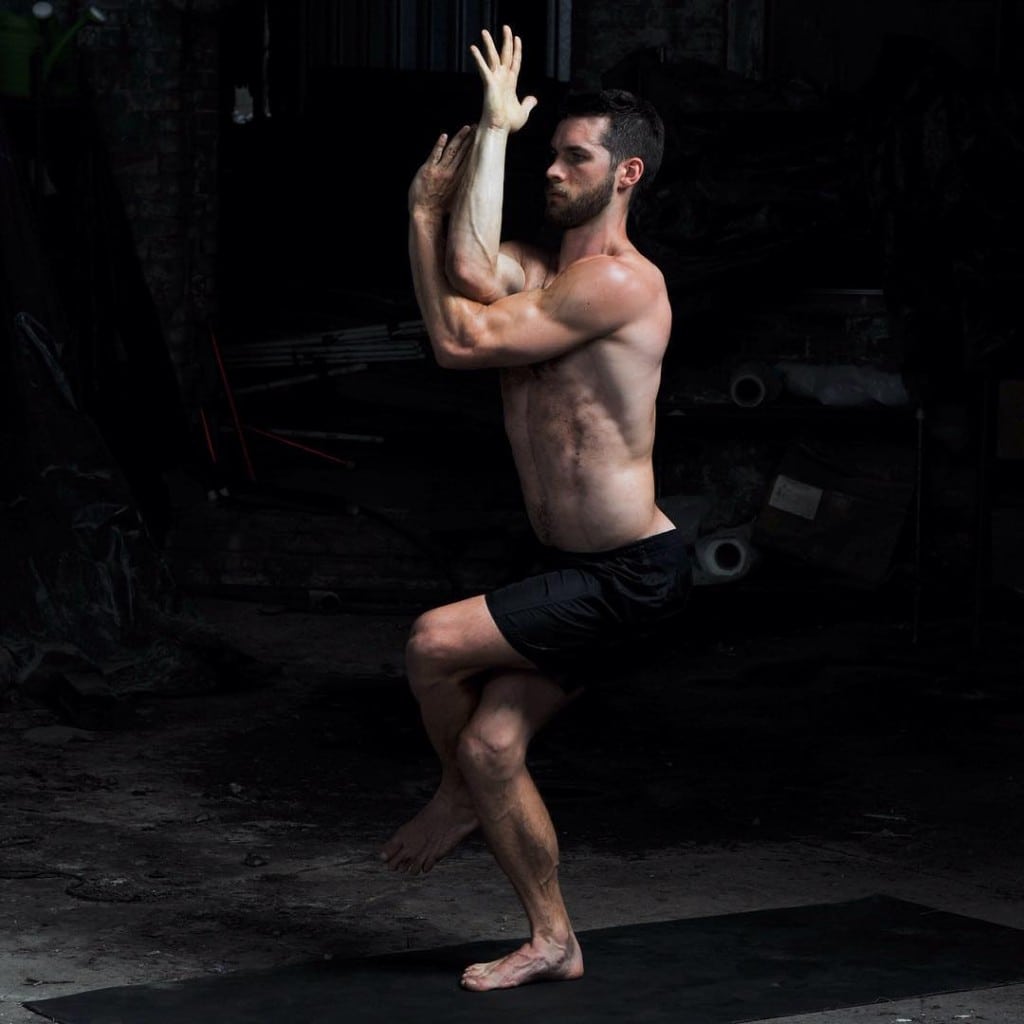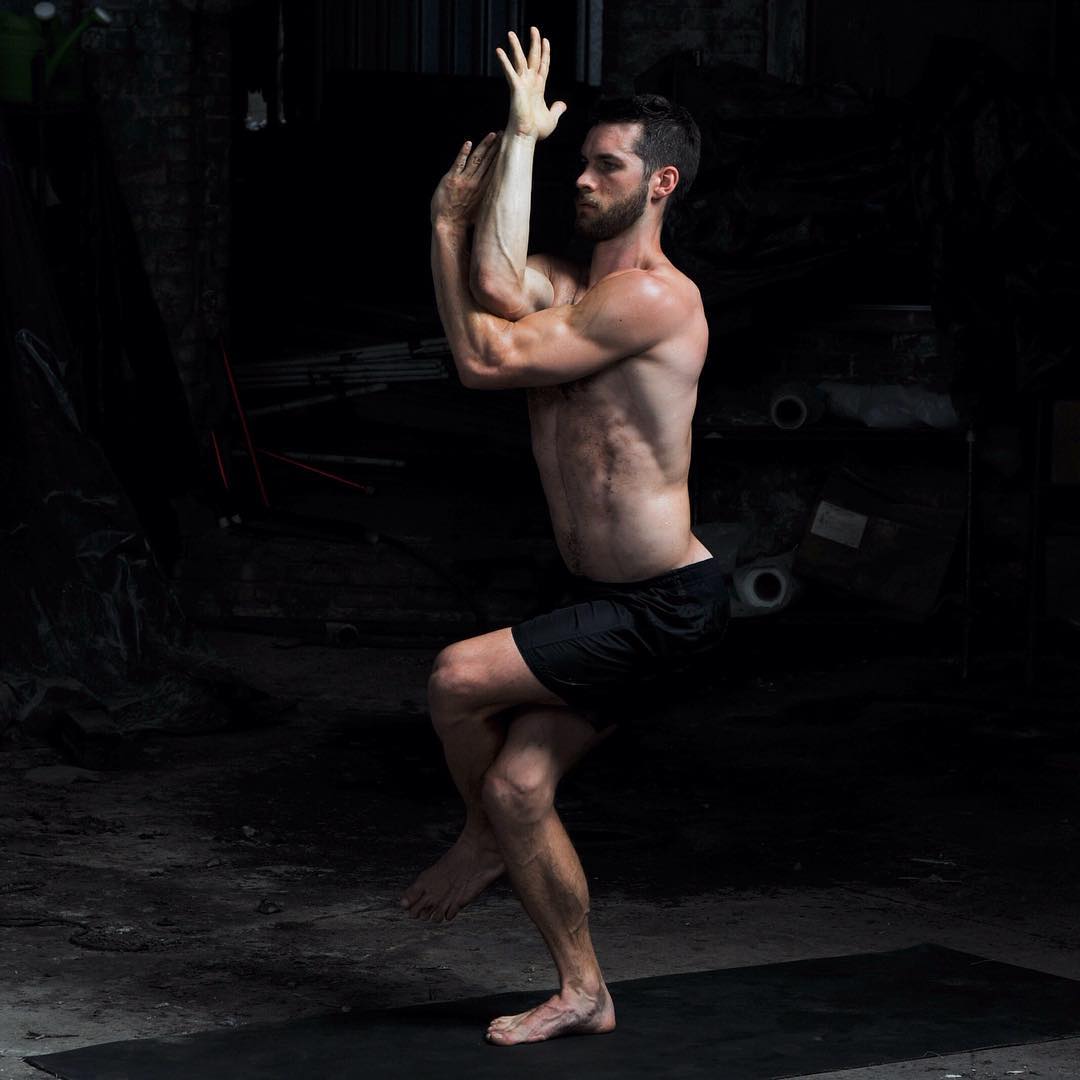On October 22, I had an interview on a podcast. The main goal was to discuss the benefits of yoga as they pertain to men. The podcast in question is The James Swanwick Show. (You can listen to the full recording on iTunes or watch the video by clicking here.) James started off the interview by asking me to list 5 benefits of yoga. I was prepared for that. Off the top of my head I rattled off flexibility, core strength, isometric strength building, testosterone production, and stress relief. James then asked something that I wasn’t really prepared for. He caught me off guard with THIS question. “Here’s my issue, here are some things I don’t like. I don’t understand all the weird names that people are saying… what is it?”
I answered his question, and told him WHY yoga instructors use Sanskrit. But I didn’t have enough time on the podcast to talk about my comprehensive thoughts on the use of Sanskrit in yoga classes. The question caught me off guard as it was, and there are a lot of things to consider when it comes to talking about the use of Sanskrit in yoga classes. Personally, I believe that it is one of the main reasons why so many people are turned off by yoga. In the next few paragraphs, I talk about my personal experiences with Sanskrit, as well as its use in yoga classes by the majority of yoga instructors. My thoughts all lead to one statement: Stop Using Sanskrit.
It’s safe to assume that the majority of people will defend their use of Sanskrit in yoga classes as a way of paying tribute or respecting the original source of the yoga postures. But here’s the thing: Most poses that exist in yoga today were not invented until the early 20th century. Yoga as we know it today is a combination of multiple disciplines, including such diverse sources as British gymnastics and Indian martial arts. This is not to say that some poses that we have today have not existed for hundreds of years. Variations of cobra showed up as early as the 11th century, and the seated posture (lotus) that is so commonly associated with meditation and yoga has existed for thousands of years. (Evidence can easily be traced to 2,000 years ago, if not more.)
However, there is no such thing as an Ancient Indian warrior doing a sun salutation. The sun salutation didn’t even exist until the 20th century, when yoga started to be seen more as a form of physical fitness in addition to being a lifestyle. People may have doing squats for thousands of years, but they probably did not gather on top of a mountain and watch the sun rise while doing a chair pose together.
Okay, now that THAT’S settled…
Let me talk about the first time that I heard the poses.
- “Moving into Adho mukha svanasana…” What did she just say? Adho whata whata? I don’t know what she’s talking about. Oh my god… you want me to do what with my legs? No way that’s happening. My body doesn’t work like that.
- “Veera hanumahana hana?” Oh, we’re going a lunge. Cool. Why didn’t she just say that we’re doing a lunge?
- “Ease on to your back and lie down in shavasana…” Shavash awhat? Oh, we’re lying down on the floor. This is nice. I hope they don’t mind if I take a nap…
Then I woke up 15 minutes later. Most of the class had already left and the instructor was left with one lone student discussing the class. Anyways… here’s what I took away from that experience:
- I want to be better at yoga.
- I want to learn some of those names so I can be part of this yoga club.
- At some point, I’m going to use these names myself.
Fast forward a few months, to when I started teaching my lacrosse team and putting yoga videos on YouTube. I’m embarrassed to say this, but if you look back at some of my earlier videos you’ll find that I did indeed use a significant amount of Sanskrit. I did so because I believed that doing so was the proper terminology. I was still being sucked in to the yoga culture, and had yet to develop my own identity (an identity and an approach that ultimately led to what Man Flow Yoga is now). I was still embarrassed to use the Sanskrit terminology outside of yoga circles. At other times, I thought the names were so cool that I simply had to use them. This pose is called utkatasana (pronounced ood-kah-tah-sah-naa)? That sounds f***ing awesome, why wouldn’t I say it?
Let’s fast forward some more, to the present day. About 3-4 years later, all of which were very intensely focused on yoga, and I now have years of experience and immersion in yoga world to talk about the use on Sanskrit. What is the REAL reason that people are using Sanskrit? My interpretation is the majority of Sanskrit-users are doing so in order to:
- Attempt to create authenticity in the esoteric aspects of yoga to make it feel more interesting, arcane, or revered.
- Demonstrate their commitment to learning yoga through use of vocabulary from another language; a way of showing their knowledge and expertise so that students are more likely to trust them.
- Create an air of exclusivity to yoga that allows people to feel like part of a community, once they understand enough of the Sanskrit being used in class to use some of those terms in every day conversation.
Here’s what I think when I hear Sanskrit being used now.
- This class is FULL of beginners. Why are you using a term that half of these people won’t understand? You are not making the class easier for people; you are discouraging them by making them feel left out of your exclusive club.
- That guy in the corner who is here to work on his flexibility because he heard about NFL players on ESPN using yoga to improve their own flexibility is NEVER going to come back. He’s here to work on his flexibility and improve his core strength; not to feel stupid or ignorant because you’re using words from a foreign language that nobody but you understands.
- If you’re going to use the Sanskrit name instead of the English name, why not use French or Spanish instead?
The reason why I started to reject the use of Sanskrit stemmed from the realization that the primary goal of mainstream yoga was not to improve mental OR physical fitness. Yoga instructors essentially pay to get certified in a course that spends very little time on human anatomy, and that’s understandable, because the focus of mainstream yoga is not on physical fitness; it’s on other things, such as self-empowerment, community, stress-relief, and meditation. That’s fine, but isn’t what I was personally looking for. I assumed that there were many like me, so I created Man Flow Yoga because I wanted a great workout for my core strength, flexibility, and balance. Speaking Sanskrit didn’t fit into that equation either. Although I do consider myself a language connoisseur (I speak Turkish and understand most of its dialects, Spanish, and some Persian) it didn’t belong in my fitness class. And it’s turning more people off than just me. James Swanwick is one of those people, and I’m sure there are countless others.
As yoga instructors would say, “drop the ego”. It’s fine to use Sanskrit in front of an advanced class or group of people who understand it, but you don’t need to bolster your ego by using Sanskrit in front of beginners who don’t understand it. That wouldn’t be very yogic, now would it?


I am a Fitness Instructor for more years than I want to admit, Certified in many formats.
I couldn’t agree with you more.
I can honestly say that if you had been using Sanskrit in your videos when I stumbled across them on YouTube, I never would have stuck with yoga or joined the ManFlowYoga community. It would have been a barrier for me to get started for sure.
I have to disagree. As a child I was raised in a Sanskrit speaking only home. Our home was filled with love and joy. Now, sadly, I am functionally bilingual and am able to converse in English as a second language. I am able to speak more and at the same time say less. Please consider toning down the harsh attacks against my native tongue. Can’t we all get along?
Nandi to all!!!
Symour – in your case, obviously I do not wish for you to stop using your native tongue. I’m directing this to people who run yoga classes where they only use the Sanskrit terminology to make themselves feel cool.
My experience is that most Yoga teachers use them simply to get students used to hearing them. I guess I was lucky: my Yoga teachers only ever use them in conjunction with the English, and sometimes just don’t bother at all. To use them just for effect, obviously, is a bit silly.
To Symond Jacobs: I don’t see this as any kind of “attack”. And it’s not “harsh” either. Dean’s just saying it as it is. And he’s got a point. But – the terminology is out there, and like any technical area of study, you do have to get used to it, maybe even learn a bit of it.
they saying mukha svanasana the same way when in ballet saying plie, not squat.
Really? No one here saw the intended humor of my post? Who knows anyone raised in an all Sanskrit speaking home? Peace and love.
Ha! Symour – well played. Unfortunately text isn’t the best medium for communication. I think most of us missed the joke. 🙂